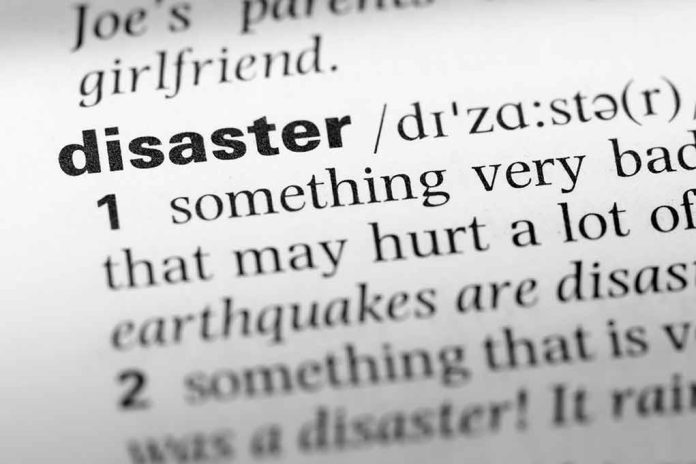
A devastating 7.1 magnitude earthquake struck Tibet, killing at least 126 people and causing widespread destruction in one of China’s most remote regions.
At a Glance
- The earthquake hit Dingri County, Shigatse, western China, near the Nepal border
- At least 126 people have died, with 188 injured and many trapped in collapsed buildings
- Over 14,000 rescue workers have been deployed, facing challenges due to harsh winter conditions
- More than 3,600 buildings have collapsed, leaving thousands without shelter
- The quake was felt as far away as Kathmandu, Nepal, 250 miles from the epicenter
Devastating Earthquake Strikes Tibet
In the early morning hours, a powerful 7.1 magnitude earthquake rocked Tibet, causing widespread destruction and loss of life. The quake’s epicenter was located in Dingri County, Shigatse, western China, near the Nepal border. Chinese authorities initially measured the earthquake at 6.8 magnitude but later revised it to 7.1, aligning with the United States Geological Survey’s assessment.
The earthquake’s impact was devastating, with at least 126 confirmed deaths and 188 injuries reported by state media. The toll is expected to rise as rescue efforts continue in the affected areas. Over two dozen villages, housing approximately 6,900 people, are within 12 miles of the epicenter, raising concerns about the full extent of the damage and potential casualties.
UPDATE: The devastating 7.1 magnitude earthquake in Tibet has claimed 126 lives so far, leaving 188 others injured. https://t.co/FHdZExsEKW
— Open Source Intel (@Osint613) January 7, 2025
Rescue Efforts and Challenges
Chinese authorities have mobilized a massive rescue operation in response to the disaster. Over 14,000 rescue workers, including 3,400 military and firefighting troops, along with 340 medical workers, have been deployed to the affected areas. Vice-Premier Zhang Guoqing is overseeing the rescue operation, which faces significant challenges due to the region’s harsh winter conditions.
Rescue efforts are further complicated by the region’s high altitude and lack of heavy equipment. Dingri County, located at an average elevation of 15,000 feet, presents unique challenges for rescue workers. Temperatures in the area have plummeted to as low as 5 degrees Fahrenheit, severely limiting the time available to find survivors trapped in the rubble.
Infrastructure Damage and Relief Efforts
The earthquake has caused extensive damage to infrastructure in the affected areas. More than 3,600 buildings have collapsed, leaving thousands of people without shelter. The poor construction quality of many homes in the region has contributed to the high death toll and widespread destruction.
In response to the crisis, authorities have allocated disaster relief supplies to the affected areas. Liu Huazhong reported, “A batch of disaster relief supplies including self-heating rice, mineral water, instant noodles, cold-resistant coats, cold-resistant shoes, blankets, beds, and tents has been urgently allocated by the townships.” These supplies are crucial for supporting survivors and rescue workers in the harsh winter conditions.
Regional Impact and Historical Context
The earthquake’s effects were felt far beyond the immediate epicenter. Tremors were reported in Kathmandu, Nepal, located 250 miles away from the quake’s origin. This event has evoked memories of the devastating 2015 Nepal earthquake, which caused significant destruction and loss of life in the region.
The Dalai Lama offered his condolences, stating, “I offer my prayers for those who have lost their lives and extend my wishes for a swift recovery to all who have been injured.” His statement also highlighted the historical context of Tibet’s annexation by China, adding a layer of political complexity to the disaster response.
As rescue efforts continue and the full extent of the damage becomes clear, this earthquake serves as a stark reminder of the region’s vulnerability to seismic events. It underscores the critical need for improved disaster preparedness and resilient infrastructure in this tectonically active part of the world.
Sources:
China: At Least 126 Dead After 7.1-Magnitude Earthquake Hits Tibet
Hundreds rescued as search for quake survivors continues in Tibet
Strong Earthquake Hits Remote Tibet in Western China, Killing Dozens



